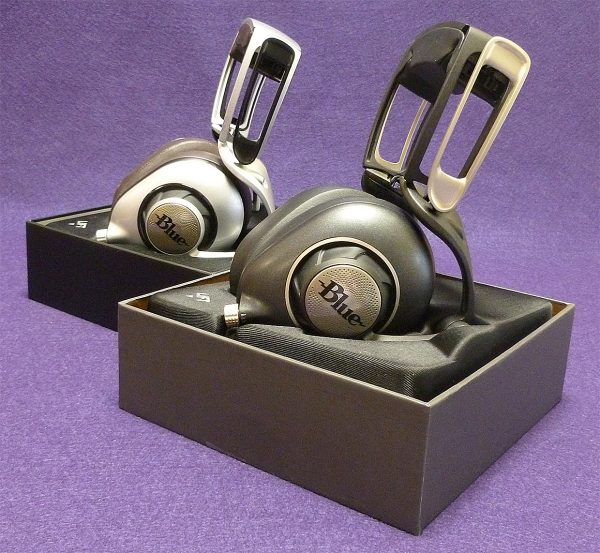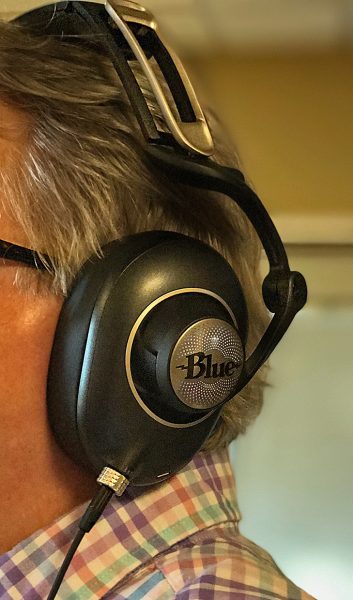
While planar magnetic speakers have been around for a while, the tech can mostly be seen in larger speakers. And although planar magnetic headphones have been around since the 70s, they’ve only escaped cult status within the last few years. Now, many companies produce these kinds of headphones. Audeze is one of the more popular planar magnetic headphones makers who offer many models at many prices—all expensive. They’ve now shrunk this speaker technology into an earphone with the introduction of the iSINE 10—and it is amazing!
Audeze makes only planar magnetic headphones such as the LCD-4 which sells for an eye-watering $4,000. Obviously, the LCD-4 headphones are not for everyone—they’re big, bulky, expensive and need a really good amplifier to sound their best. With the iSINE 10, Audeze has not only shrunk the planar magnetic down to earphone size but also shrunk the price—a lot.
The Audeze iSINE 10 is unlike any other earphone you’ve ever seen. Since it uses magnetic planar technology, it wouldn’t fit into a standard earphone shell. Instead, the speaker sits outside your ear, held in place by the ear plug itself, or with the help of supplied ear hooks. While they might look like tiny headphones, their sound is bigger than many regular headphones.
Here are the specs and features:
• Planar magnetic drivers
• Neodymium diaphragm
• 30mm Transducer
• 3W max power
• Frequency response 10Hz – 50kHz
• THD <0.1% @ 100dB
• Impedance 16 ohms
• Weight 20g
• Design by DesignWorksUSA a BMW group company
• Ear hooks and Earlocks
• Certificate of authenticity
• User guide and warranty
• 59 in. audio cable, 1/8” stereo plug input to 2-pin plug output
• 59 in. Cipher cable, Lightning plug input to 2-pin plug output

 Despite its unusual looks, the iSINE 10 headphone’s Spiderman looking web design of the outer shell serves a purpose. This allows the shell to be open-backed—very unusual in in-ear headphones. Open-backed simply means that when wearing the iSINE 10 in-ear headphones, you can still hear your surroundings—and to a lesser extent, people can hear what you’re listening to. In other words, sound leaks in and out of an open backed design. The big advantage to this approach is that music sounds more open and spacious. The audio sounds like it surrounds you rather than just in your head, which is how a closed-back headphone or regular earphone sounds.
Despite its unusual looks, the iSINE 10 headphone’s Spiderman looking web design of the outer shell serves a purpose. This allows the shell to be open-backed—very unusual in in-ear headphones. Open-backed simply means that when wearing the iSINE 10 in-ear headphones, you can still hear your surroundings—and to a lesser extent, people can hear what you’re listening to. In other words, sound leaks in and out of an open backed design. The big advantage to this approach is that music sounds more open and spacious. The audio sounds like it surrounds you rather than just in your head, which is how a closed-back headphone or regular earphone sounds.
Even though the iSINE 10 look larger than normal earphones, they are light in weight, which is not what I expected. This makes them more comfortable to wear over longer periods. Heavier earphones always feel like they’re about to fall out as you move your head. Not these. Helped by around-the-ear snap-on clips (ear hooks) or small silicone ear locks, the iSINE 10s stay in place. I’m not a fan of the ear hooks because they interfere with my eyeglasses.
After much trial and error, I finally figured out how the ear locks work—the manual was no help. Combining the ear locks with the largest tips Audeze offers, the iSINE 10 in-ear headphones stay put as long as I don’t shake my head too much. After all, the iSINE 10’s are designed to be used on the go. Note that Comply makes foam tips which may be a better fit overall but it’s an extra cost hassle. In this price range, there should be a wider array of ear tip choices offered. Incluared is a softly lined mesh and protein leather carrying case for protecting the earphones. It has plenty of room for the earphones as well as both the lightning and regular mini plug cables.
One downside of planar magnetic speaker technology is that they require more power than most earphones, and a smartphone amp isn’t sufficient enough for the iSINE 10s to sound as good as they should. Audeze has solved this dilemma with an iPhone lightning cable that bypasses the headphone jack completely. For iPhone 7 users, this is welcome news since there is no headphone jack. However, there is more to this lightning cable than you might think.
The Cipher lightning cable (as Audeze calls it) is a 59″ cord with an in-line remote/mic that has 2-pin connectors at one end and an Apple Lightning connector at the other (Apple only—sorry, Android). But wait, there’s more. The Cipher cable contains an in-line headphone amplifier, a 24-bit digital-to-analog upsampling converter (DAC) and digital signal processing (DSP). This combination is a major reason the iSINE 10 in-ear headphones sound as good as they do. By including an amp and DAC with the cable, the iSINE 10 receives a direct digital signal—bypassing the iPhone’s weaker amp and DAC—then translates that signal into analog sound waves. Keep in mind that analog is what you actually hear (you can’t hear digital). The Audeze amp and DAC are more powerful than the iPhone’s, so your music will sound clearer, louder and more alive that without this in-line amp. The Cipher cable also does not exhibit any annoying microphonics, so the cable can be tapped or bumped without any noise leaking into the audio.
Then there’s a free and simple app that’s basically a real-time 10-band graphic equalizer with a couple of presets. It may be simple but it works. The app also provides a quick way to upgrade iSINE firmware should it be needed. The iSINE 10 in-ear headphones did need a firmware upgrade which took about 2 minutes with no issues.
Note: Audeze spells Cipher with an “i” on their web site and Cypher with a “y” on their app. I decided to go with Cipher.
Earlier I marveled about how good the iSINE 10 in-ear headphones sound. Let me explain. When I’ve previously reviewed planar magnetic headphones, I wrote about the transparent nature of the audio. The same holds true here, but even more so because of one difference—the open backed design I mentioned earlier in this review. Listening to music is always more fun when you are surrounded by it.
I decided to try the Onkyo music player app on my iPhone 7 Plus. This app allows me to download and play high-resolution files in their native format—something iTunes does not allow. I listened to uber hi-res versions of Pink Floyd’s “Dark Side of the Moon” and its follow-up, “Wish You Were Here”. Both albums have become a cliché in any headphone testing, but their high-quality sonics make them an obvious choice. The iSine 10 earphones provide details that are both subtle and interesting. There is a lot of stuff going on in these albums—much of it buried under layer upon layer of sound effects. Having earphones that can extract these hidden aural gems is half the fun and the iSINE 10 earphones certainly provide that fun.
Because of the built-in DAC, the iSINE 10 can upsample songs from lower res files. Even though upsampling can make an okay song sound better, it’s not a magic ingredient that can make a bad recording sound good. It simply improves what’s already there in the music file. I’m a sucker for old Height-Ashbury hippie music from the mid to late 60s. The San Francisco group, It’s a Beautiful Day, made a couple of “flower power” albums (the self-titled debut and its follow-up, “Marrying Maiden”) that sound a bit dated today, but I still love them. Their cover version of Tim Buckley’s “The Dolphins” from “Marrying Maiden” sounds like soft rock with a touch of country thrown in. Even though this song (or their albums) were never audiophile quality, the iSINE 10 brings out details that can easily be missed, from their wonderful harmonizing to David LaFlamme’s expert violin playing. Other good examples to listen to are “Waiting for the Song” and “White Bird.”
The iSine 10 earphones are not cheap, but not outrageously priced either. There is a much more expensive iSiINE 20 available, but it requires more power and is not as mobile friendly. The iSINE 10 is more appropriate for those music fans who are looking to upgrade their earphones or are just curious about how planar magnetic speakers sound. Audeze has elevated the art of planar magnetic technology with the iSINE 10 in-ear headphones. They’re stellar sound quality and ease of use make them a game-changer that could help Audeze become not just an audiophile brand but a household name in audio.
Source: The sample for this review was provided by Audeze. The iSINE 10 in-ear headphones with lightning cable have an MSRP of $399.99 US. Please visit Audeze for more info and Amazon to order the lightning cable version of the standard 3.5mm cable version.
Product Information
| Price: | $399.99 US |
| Manufacturer: | Audeze |
| Retailer: | Amazon |
| Pros: |
|
| Cons: |
|
Filed in categories: Reviews
Tagged: Headphones
Audeze iSINE 10 planar magnetic in-ear headphones review originally appeared on on May 3, 2017 at 10:00 am.
Note: If you are subscribed to this feed through FeedBurner, please switch to our native feed URL http://the-gadgeteer.com/feed/ in order to ensure continuous delivery.



























































